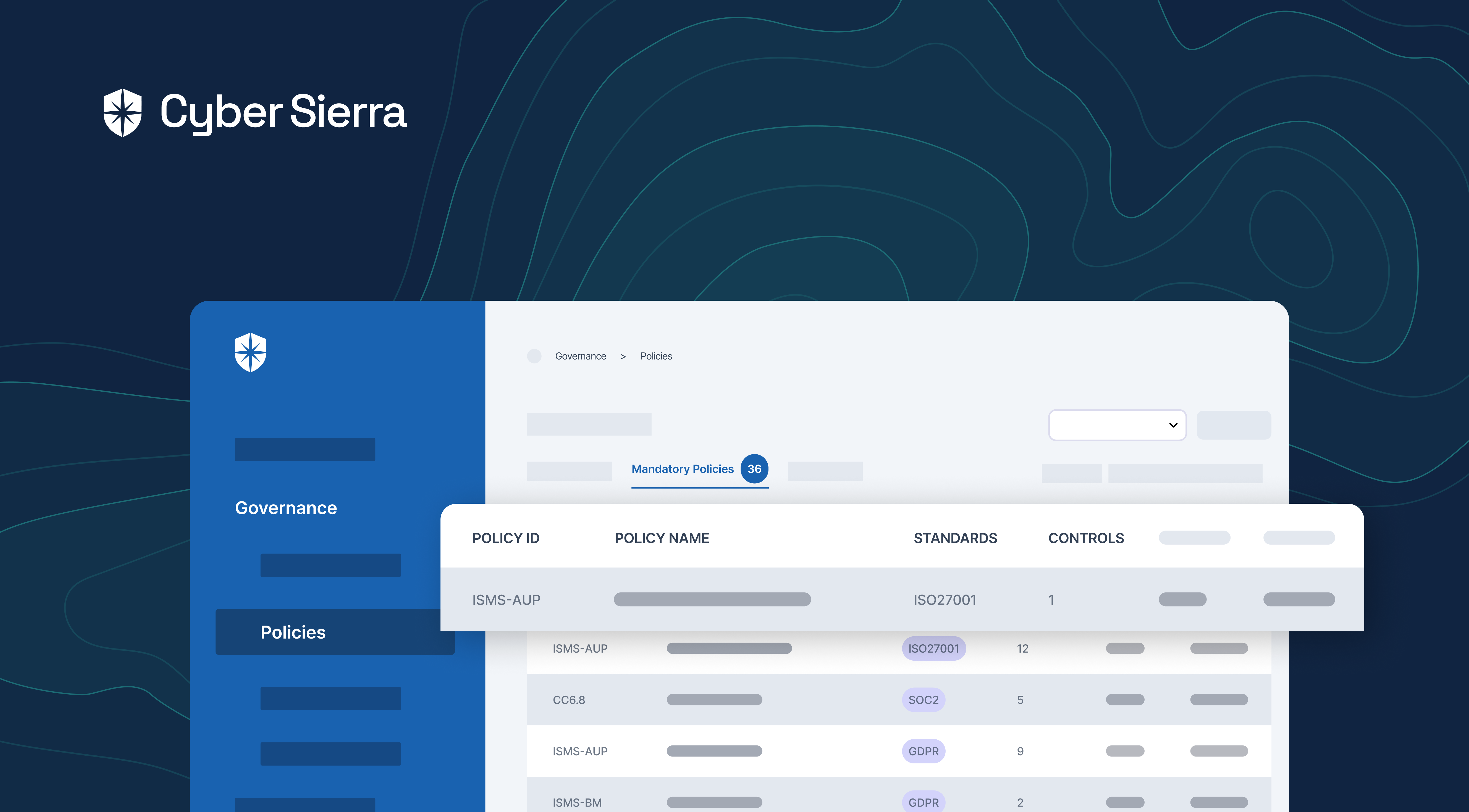

Continuous Control Monitoring (CCM): What It Is and Why It Is Important?
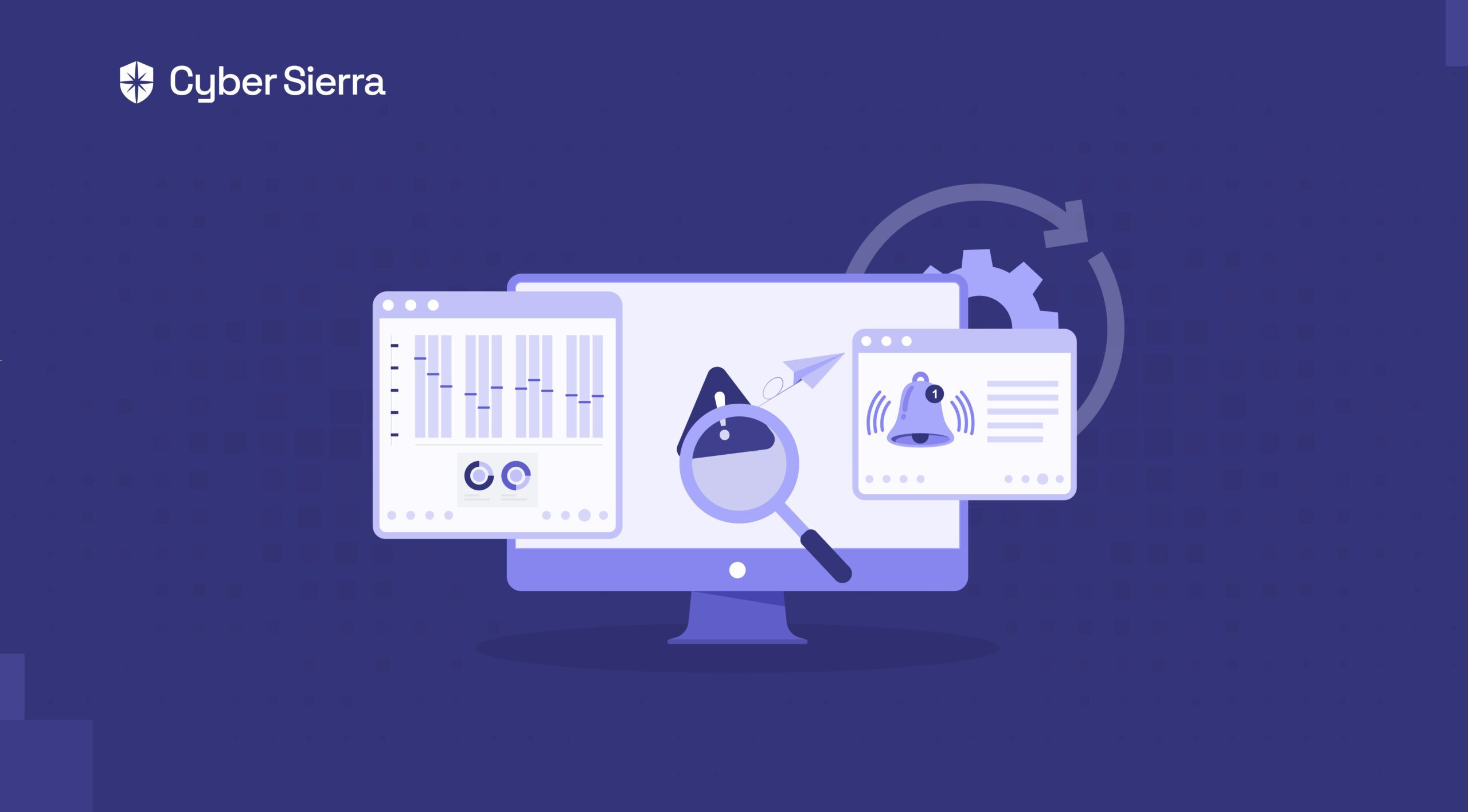




Join thousands of professionals and get the latest insight on Compliance & Cybersecurity.
Ever wondered why some businesses manage to stay ahead of regulatory changes and potential risks while others drown in the complexities of compliance standards and data security?
The answer is simple: they have a robust compliance program in place.
Any enterprise that handles sensitive data must monitor and control its information end-to-end.
That’s where the role of continuous control monitoring (CCM) comes in.
In a fast-paced business world, CCM is essential for proactively handling sensitive information and maintaining a robust approach to risk management and operational efficiency.
But what does CCM entail, exactly? And how can you go about implementing it in your enterprise?
Let’s examine what CCM means and why it’s so important for your business.
What is Continuous Control Monitoring?
Continuous control monitoring is an ongoing process that involves near real-time assessment and oversight of cybersecurity measures to ensure compliance with regulations. It is a set of technologies designed to offer consistent and high-frequency, automated assessments of control measures.
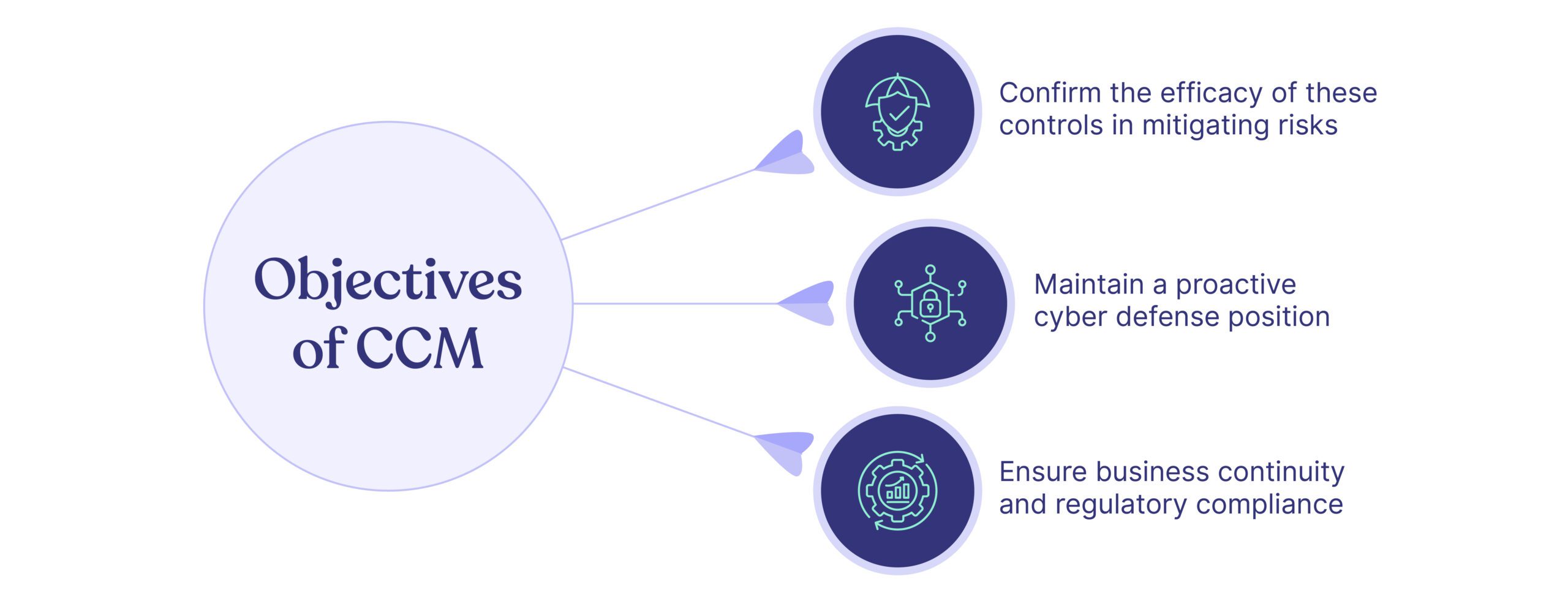

The objective is to
- Confirm the efficacy of these controls in mitigating risks,
- Maintain a proactive cyber defense position, and
- Ensure business continuity and regulatory compliance.
However, the goal of CCM is not simply to confirm that the controls are in place but rather to provide an ongoing and near real-time assessment of their efficacy.
In other words, CCM provides insights into how well a control measure is performing and highlights any opportunities for improvement or optimization.
Enhancing Efficiency Through CCM
While CCM provides great tools and solutions, the fulcrum of its success heavily depends on your willingness to embrace change and improve your operations. Here’s how you can enhance your operational efficiency with a CCM:
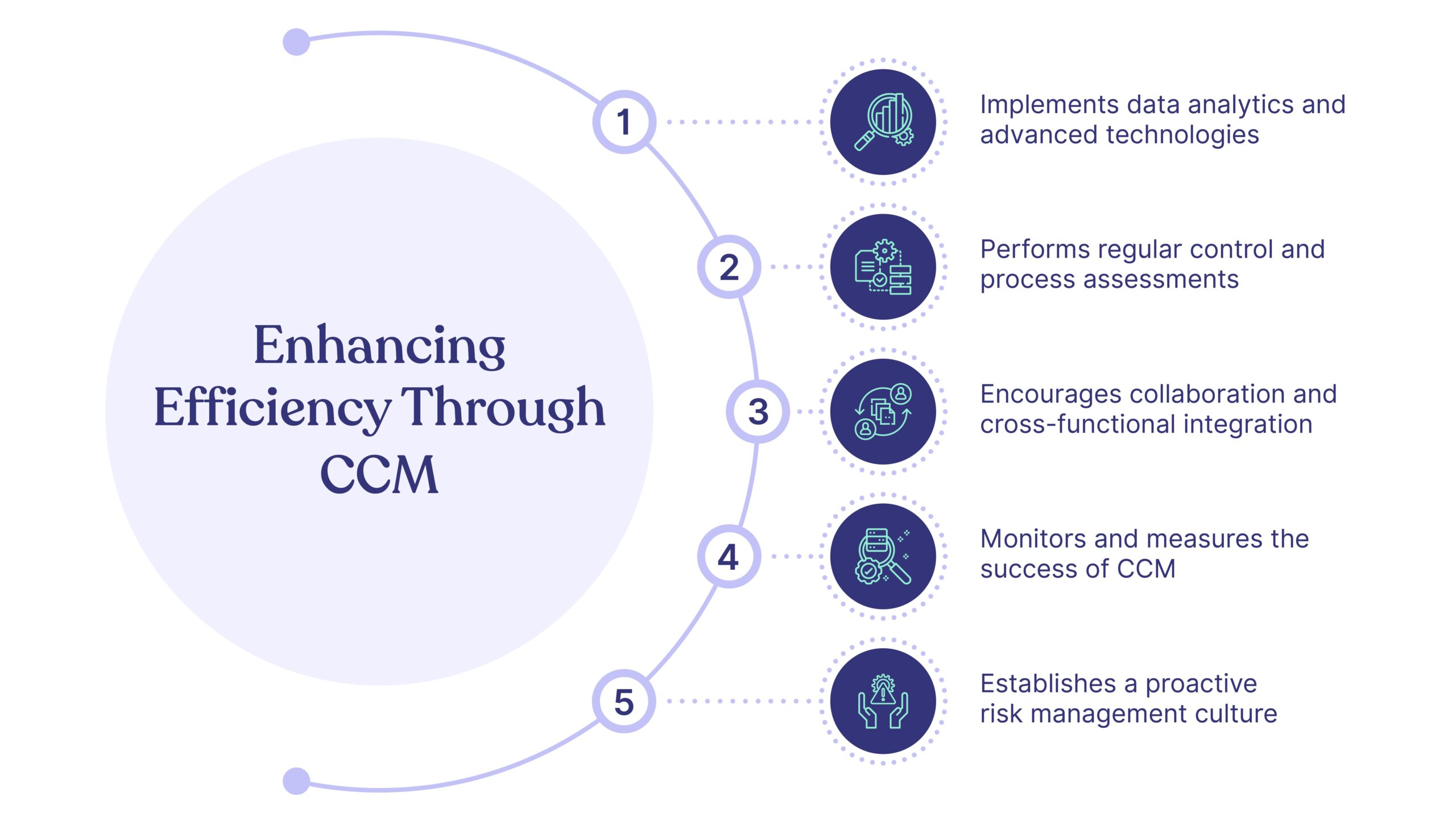

1. Implements data analytics and advanced technologies
Integrate CCM with advanced data analytics, machine learning, and artificial intelligence to augment its capabilities. Leverage these advanced technologies to identify patterns, trends, and anomalies quickly.
This combination assists in predicting risks, making data-driven decisions, and mitigating issues before they cause significant damage. Consequently, integrating data-driven techniques and CCM can take your risk management and operational efficiency to new heights.
2. Performs regular control and process assessments
Perform frequent evaluations of your organization’s controls and processes to optimize and adapt to evolving requirements continuously.
These assessments foster enhanced efficiency by
- Identifying gaps,
- Redundancies, and
- Opportunities for improvement.
CCM facilitates timely adaptations, ensuring your organization is ready to address regulatory changes, market shifts, and emerging threats.
3. Encourages collaboration and cross-functional integration
Promote cross-functional integration and collaboration between departments to streamline communication, decision-making, and actions when operating with CCM.
Unify risk, control, and compliance teams with IT and security departments to synchronize objectives, reduce operational complexities, and enhance overall efficiency.
This approach fosters a holistic understanding of the organization’s control environment and empowers coordinated responses to emerging risks.
4. Monitors and measures the success of CCM
Establish key performance indicators (KPIs) and metrics to gauge the success of your CCM initiatives. Track improvements in compliance, incident resolution times, and control effectiveness. Use these insights to refine your approach, optimize resource deployment, and validate the impact of CCM on your organization’s efficiency.
5. Establishes a proactive risk management culture
Finally, foster a forward-thinking risk management culture within the organization to fully harness the benefits of CCM. Encourage employees to participate in decision-making and recognize the importance of controls and fraud prevention.
Cultivate proactive security habits, such as regularly tweaking and reviewing controls, to enhance your organization’s adaptability.
When employees understand the link between continuous control monitoring and improved efficiency, they are more likely to commit to the necessary changes.
With Cyber Sierra’s unified cybersecurity platform, you can maintain a central repository of your company policies, and make it accessible to all employees. Cyber Sierra’s platform also offers a comprehensive employee security training program to address today’s most pressing cyber risks.
Book a demo with us to know how you can use Cyber Sierra to kickstart your CCM program.
Benefits of Implementing Continuous Control Monitoring
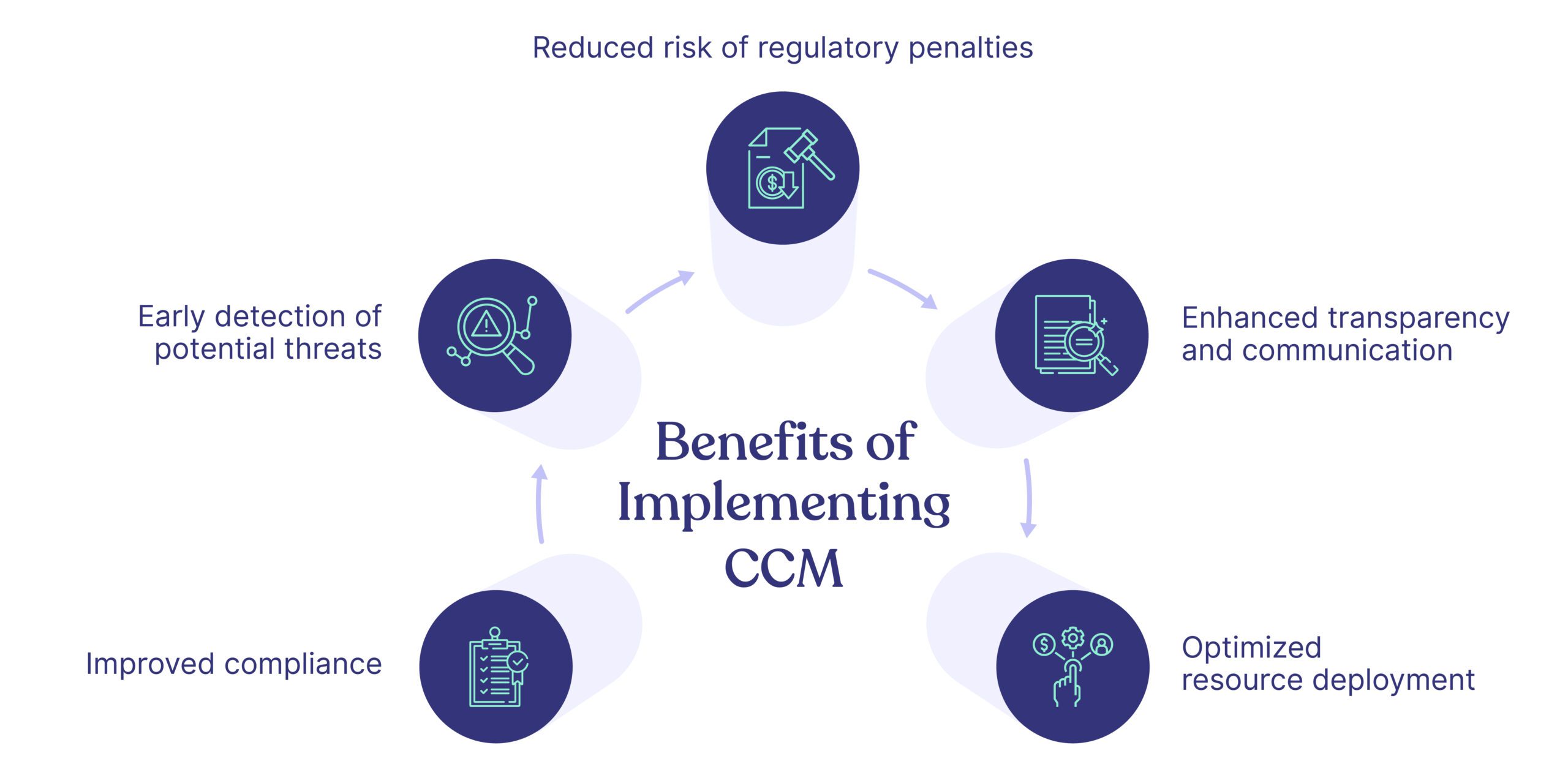

The benefits of implementing continuous control monitoring include the following:
- Improved compliance
- Early detection of potential threats
- Reduced risk of regulatory penalties
- Enhanced transparency and communication
- Optimized resource deployment
Let’s look at them in more detail.
1. Improved compliance
CCM provides an ongoing review of your enterprise’s cybersecurity, financial and operational processes to ensure they adhere to internal and external regulatory standards.
This is especially true for enterprises, as they operate at large scales and typically face diverse and extensive regulatory requirements.
This continued surveillance means potential compliance issues can be identified and rectified rapidly, leading to fewer incidents while maintaining your organization’s reputation with regulators and stakeholders.
2. Early identification and mitigation of risks
CCM operates in near real-time, allowing for immediate identification of potential threats or irregular activities. This effectively turns risk management into proactive rather than reactive practice for enterprises.
3. Lowered risk of regulatory penalties
CCM offers a holistic view of the enterprise, clearly showing current and future risks. This allows for early detection and mitigation of regulatory penalties resulting from non-compliance with regulations such as PCI DSS HIPAA, or GDPR.
In the long term, this can result in substantial cost savings and protect your enterprise’s reputation and business relationships.
4. Increased transparency and improved communication
CCM promotes transparency through its capability for near real-time reporting on the state of an enterprise’s essential controls.
It facilitates better communication between different enterprise departments, stakeholders, auditing bodies, and regulators.
Improved transparency also builds trust and cooperation across the enterprise, leading to more efficient decision-making processes.
5. Optimized resource allocation
CCM provides near real-time, actionable intelligence that assists in strategically deploying resources. With continuous monitoring, enterprises gain insights into crucial controls and underperforming areas.
This facilitates the precise allocation of resources—whether in the form of personnel, tools, or funding—towards areas where they will have the maximum impact in boosting efficiency and effectiveness.
Choosing the Right CCM Software
Choosing the right CCM solution for your enterprise requires careful consideration of your exact control needs, budget, the scale of your operations, and the specific compliance regulations you need to adhere to.
This task, while complex, is crucial for CISOs and security professionals to enhance the effectiveness of their security controls. Here’s how you should go about it:
1. Focus on features tailored to your needs
CCM software solutions have many features, but the right solution depends on features that align with your distinct needs.
If most of your controls are financial, select a tool that provides in-depth financial risk analysis capabilities. On the other hand, if your primary concern is fraud detection, choose a solution robust in anomaly detection and complicated event correlation.
Cyber Sierra’s platform, for instance, can help enterprises get and maintain compliance with regulations such as Australia’s CIRMP, India’s SEBI laws on cybersecurity for AMCs, or even help monitor custom control frameworks.
2. Prioritize ease of integration
The right CCM software should easily integrate with your existing systems and processes. If, for instance, a significant portion of your workflow is cloud-based, you would want a cloud-compatible software solution that allows for seamless data flow between systems.
Interoperability between software systems reduces redundancies, facilitates straightforward implementation, and simplifies operations.
3. Value vendor support
Choose a CCM solution backed by a vendor offering robust customer support, training, and documentation.
Remember, the goal of choosing a CCM software solution isn’t just to purchase a product; it’s to cultivate a partnership with a provider who will support you as your organization evolves, and your monitoring needs grow or change with time.
For instance, Cyber Sierra offers comprehensive customer support from trained cyber security professionals.
4. Assess scalability
Given that business growth is the goal of every enterprise, choose a CCM software solution that can scale in tandem with your organization’s growth.
Whether you plan to increase the number of employees, expand to new geographical locations, or diversify your product offerings, your CCM software should be able to cope with these changes without compromising its effectiveness.
Cyber Sierra’s enterprise grade platform is built to grow with your organization. The platform allows you to upgrade and buy additional security features, such as third-party risk management, employee security training, threat intelligence and cyber insurance and access them all from the comfort of a single dashboard.
5. Determine the solution’s ease of use
It will be much easier to use your CCM solution if designed with simplicity in mind. Consider investing in a software solution that features a user-friendly interface, intuitive navigation and workflow, and self-explanatory training modules.
This will allow you to train your employees on the software without requiring them to rely on outside resources.
6. Budget
Before choosing a CCM solution, it’s important to consider the value it will bring to the organization versus its cost.
- Initial costs: These include the purchase of the solution and the cost of deployment, which may involve installation, system integration, and customization.
- Recurring costs: Consider the costs that recur over the lifetime of the solution. These could be license renewal, maintenance, upgrading, etc.
- Training costs: Factor in the time and monetary cost required to train your staff to use the new solution.
Remember, it’s not always about finding the cheapest solution but rather one that offers the best functionality for your organization’s needs at a reasonable price.
This balance is key to finding a solution that will be sustainable and beneficial in the long term. In any case, your budget should be realistically aligned with the size and requirements of your organization.
Wrapping Up
In conclusion, implementing a CCM system can significantly enhance your operational efficiency and risk management, contributing to the success of your organization.
This is why it’s imperative that you select a solution that is capable of meeting your needs and supporting your business objectives. Consider the above factors when evaluating software solutions, and be sure to evaluate each vendor on an individual basis before making your final decision.
Remember, implementing a CCM is an investment for your business. So, choose wisely!



A weekly newsletter sharing actionable tips for CTOs & CISOs to secure their software.
Thank you for subscribing!
Please check your email to confirm your email address.
Find out how we can assist you in
completing your compliance journey.




